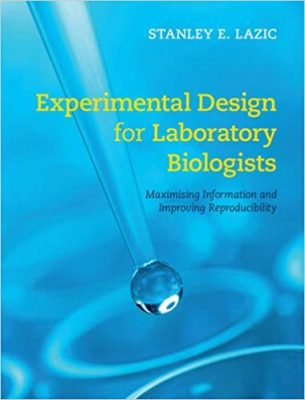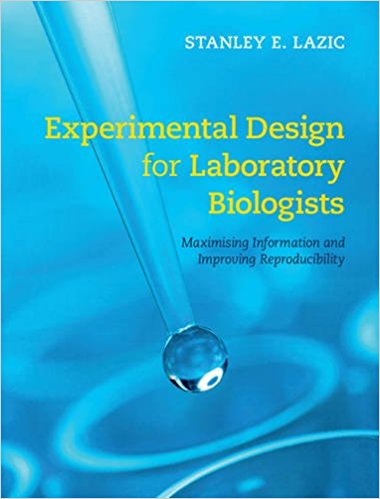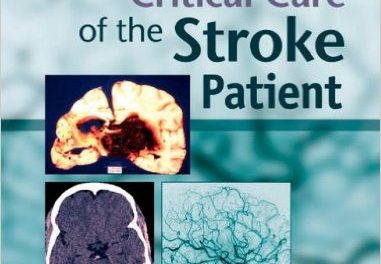 Author: Stanley E. Lazic
Author: Stanley E. Lazic
Publisher: Cambridge University Press – 412 pages
Book Review by: Sonu Chandiram
Experimenters typically wonder if the results they obtained are incorrect, flawed or unreliable. Sometimes they don’t know how to mathematically determine if these or other undesirable qualities exist in the outcomes of their experiments, particularly those done in biological laboratories.
This book, intended specifically for biomedical researchers, is a practical guide that shows how to design experiments that are
- Easily reproducible
- Highly precise
- Unbiased or have low bias
- Widely acceptable in terms of results
Using cell cultures and model organisms, the author Dr. Stanley Lizac, a neuroscientist, assesses common designs, demonstrates how to control biological and technical errors, explores key ideas in designing experiments, points out math, statistical, logical, or other types of flaws in biomedical experiments, and shows how to plan and execute successful experiments. He discusses various other critically important and crucial, relevant factors, such as these :
- Checking data quality controls
- Choosing outcome variables
- Exploring data graphically
- Preprocessing data
We list below the titles of the chapters of this book of over 400 pages to provide you a brief and very concise overview of its coverage:
Preface
Abbreviations
- Introduction
- Key Ideas in Experimental Design
- Replication (what is ‘N’?)
- Analysis of Common Designs
- Planning for Success
- Exploratory Data Analysis
Appendix A: Introduction to R
Appendix B: Glossary
Additional information such as R code, data sets and the labstats R package can be found on an accompanying website: https://stanlazic.github.io/EDLB.html
This book has been developed and written for anyone conducting lab-based biological research, from students to principal investigators working in academia or industry.
To explain how the author Dr. Lazic plans help researchers with this book, besides what we have written above in bullet points, he begins by quoting two people in his Preface:
“Everything of importance has been said before by someone who did not discover it.”
– Alfred North Whitehead
“Everything that needs to be said has already been said. But since no one was listening, everything must be said again.”
– Andre Gide
Lazic states that most of this book’s contents have appeared elsewhere but in places where biologists are unlikely to look at, such as in statistics journals and papers on methods in other fields.
So he writes clearly how he aims to assist biologists: “My task is to translate ideas known to statisticians into the language of experimental biology. With a background in both biology (BSc,, PhD, post-doctoral studies) and data analysis (MPhil in Computational Biology and over seven years working as a preclinical statistician in the pharmaceutical industry) hopefully I am fluent enough in both languages to perform a successful translation.”
Two of the most important shortcomings that have undermined preclinical biomedical research are: bias, and irreproducibility. Dr. Lazic points out the many reasons why bias prevails and why reproducibility is not possible in chapter 3 – Replication, and chapter 4 – Analysis of Common Designs. We urge you to study these chapters to improve the quality of your results from experiments.
The adverse consequences of flawed biomedical research can be severe, where lives are at stake. This book provides a clear guide to getting optimal and reliable outcomes. In that respect, this is a hugely important book. It is well-planned in content and presentation, and written in accessible language by a highly qualified and experienced biomedical statistician and neuroscientist.
Author:
Stanley E. Lazic holds a PhD in neuroscience and a Masters in computational biology from the University of Cambridge, and has conducted research at Oxford, Cambridge, and Harvard. He has written several papers on reproducible research and on the design and analysis of biological experiments. He has published in Science and Nature. He is currently a Team Leader in Quantitative Biology (Statistics) at AstraZeneca.







